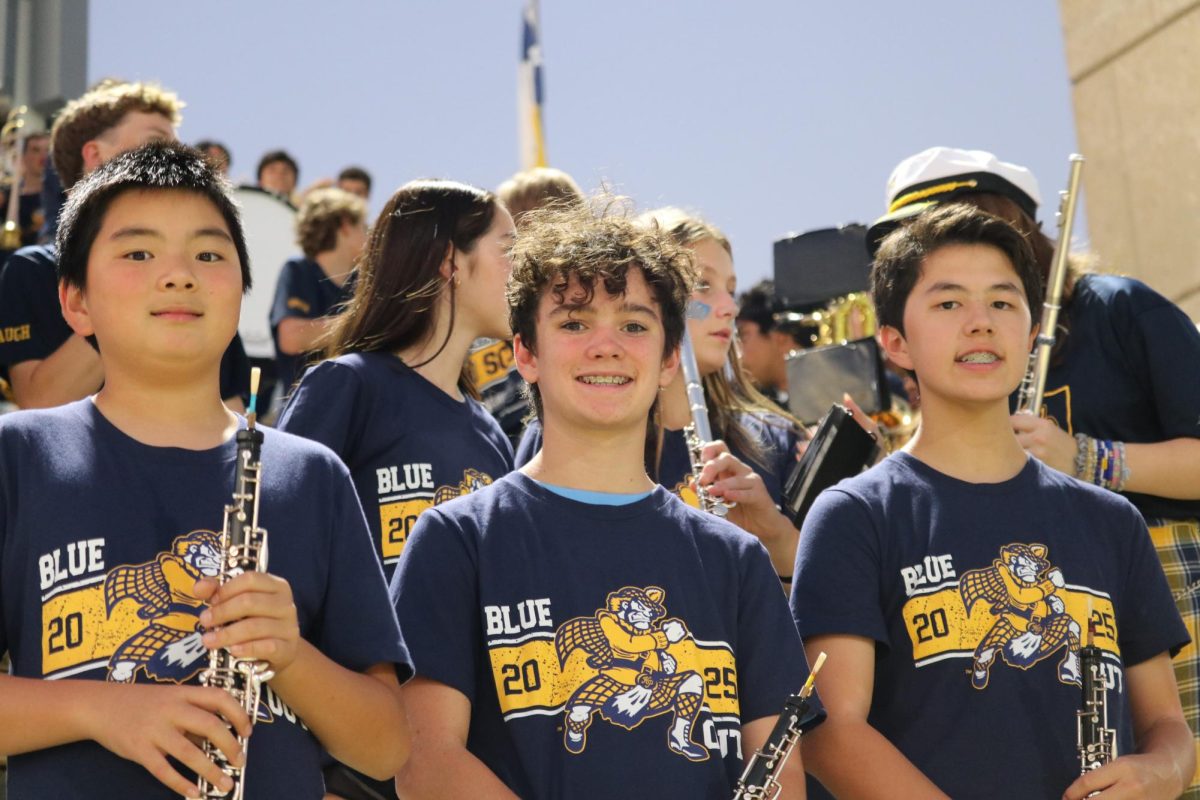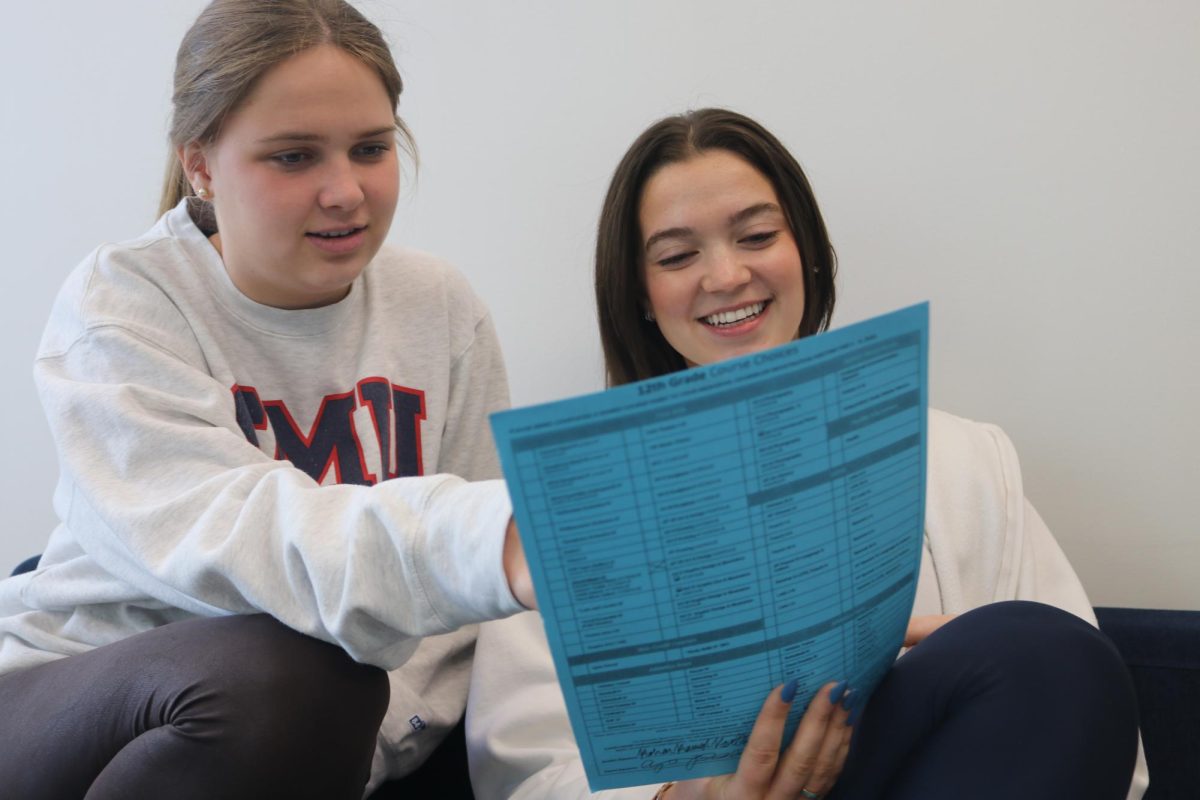Spotlights glimmer, illuminating one of Moneygram’s Formula One race cars valued at over 10 million dollars, with design and attention to detail that would blend in seamlessly at almost any museum.
On October 16, MAPS students spent the morning in the indoor practice facility getting an inside look into the operations of the MoneyGram Haas F1 team. Students heard from 2 panels, the first featuring Chief marketing officer Greg Hall and team Principal Ayao Komatsu, who assumed the role nine months prior.
For a second year, MoneyGram, a company offering money transfers and other financial services for customers world wide, is the team’s title sponsor, a partnership that comes with a multitude of benefits both on and off the race track.
“There’s tremendous overlap between our consumers, and F1 uniquely has races in 20 countries a year which no other sport does,” Hall said. “When we started putting all these things together, F1 just really popped to the surface as an obvious choice.”
According to Hall, MoneyGram only does 30 percent of their business within America, with the rest of their transfers occurring online or overseas. Their partnership with Haas F1 has introduced a new and more personalized way to reward MoneyGram customers regardless of what country they call home.
“We had someone come to the Mexico race who lives in the US. She’s a surgeon, and has a really strong following on Instagram,” Hall said. “She has 15 brothers and sisters in Mexico, and they’ve been using MoneyGram for years.”
Because the sport only has 2 athletes per team, a majority of marketing is centered around creating a likable personal identity for each driver, allowing fans to connect beyond the field. The second panel, led by an ESPN sports reporter, centered around the team’s current drivers: Nico Hulkenberg from Germany and Kevin Magnussen from Denmark, who each offered a peek inside their rather unique jobs.
“The heart rate is up, you feel the adrenaline and you’re buzzing,” Hulkenberg said. “It’s so special. The kick and the intensity we get in Formula 1 doing this competitive sport is the pinnacle of motorsport,”
Thirty seven year old Hulkenerg was first introduced to F1 racing at the age of eight, and since then the sport has become the center of his life.
“Once you retire and I did that once for a few years, you miss that feeling,” Hulkenberg said. “It’s quite addictive and it’s hard to find that outside.”
Both describe how the car becomes an extension of their bodies while on the race course.
“ I think part of the fascination of it though is finding that right mix between human performance and what the machine can do,” Magnussen said.
No matter how advanced the tech may get, driving these cars relies primarily on human instincts. Instincts which are crucial to Magnussen’s roles as both a driver and father of two young children.
“Were humans, we have like fight or flight emotions and, before racing it certainly the fighting feeling,” Magnussen said.
One of the biggest differences between regular highway racing and F1 is the intense G force drivers experience going at around 150 miles per hour. With their bodies shoved into this rather compact car, drivers’ mobility is limited only to their hands and necks.
“Especially for me being too tall for this job, it’s not too spacious, not too comfortable, and there’s certainly no cup holder in there,” Hulkenberg said.
Hulkenberg stands at 6’1″ while the average height of an F1 driver is about 5’9″. This four inch difference may not mean much to most, but in a sport where every millimeter counts, his height becomes a unique challenge.
“It’s just so tight and confined,” Hulkenberg said. “It doesn’t feel claustrophobic unless you’re upside down, but I always try to avoid that.”
When the driving season starts and athletes spend more time in the car, they develop what is referred to as Driving fitness. F1 officially banned any private race track testing in 2009, greatly impacting how teams are to prepare for their time on the course.
“G force is something that you can’t really replicate in a gym or anywhere else,” Hulkenberg said.
One of the only ways drivers can achieve an in car experience without actually driving is through virtual simulator machines. These machines, like everything else in the sport, are very expensive, with limited access for teams like Haas who lack the resources and manpower of bigger teams like Ferrari or Mercedes.
“The partnership with Toyota that we just announced last week is critical,” Komatsu said. “They give us the horsepower, financial backing, but also they’ve got great facilities in Germany, and great people to grow the team in a sustainable way.”
Becoming an F1 team principal is an extremely difficult task without a major financial backing or personal connections, Yet Komatsu’s advice for those wanting to pursue this career remains fairly simple.
“You actually gotta get off your chair and try to do it, Once you make your first step, you discover so many things,” Komatsu said. “The main thing is for you to be ready to make that first step and everything else will follow.”










